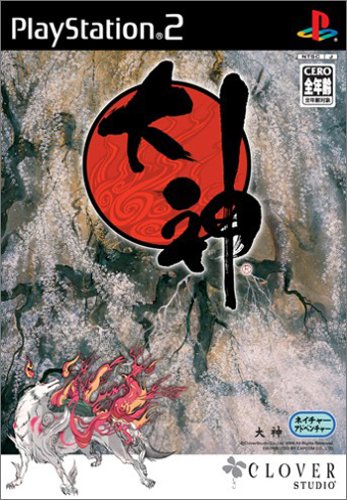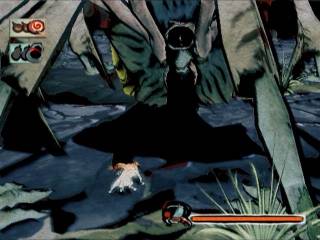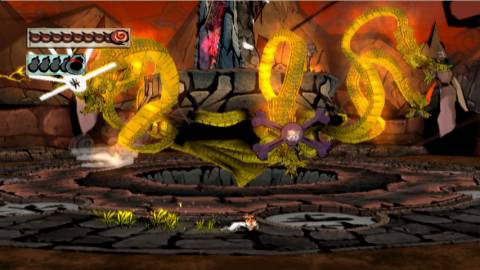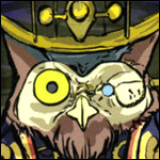Past Expiration: Okami
By Sarumarine 1 Comments
For those who don't know, Past Expiration is my little term for talking about a game way past its prime. In this case, an adventure game based on Japanese folklore with heavy influence from Legend of Zelda. Topical!
Okay, so I might be pushing it with this one. Okami isn't exactly an obscure game. Many have probably heard plenty about it either through news about the now defunct Clover Studios or general word of mouth. Not to mention it was also released for the Nintendo Wii in 2008. But I'd still like to cover it because I enjoy this game and... well, it also didn't sell very well. So there's that too.
Also, this new editor is god damn killing me, so excuse my (most probably) funky looking blog entry.
Okami (Nippon Mythology Brushwork: The Game)

If you think too hard about this game it's actually pretty bizarre. Okami is basically one long affectionate parody of Japanese Shinto mythology from the Nihon Shoki, Kojii, and other stories where you play as the sun goddess Amaterasu. For a Western comparison, it would be like making a game where you play as Jesus and go on an adventure poking fun at the stories from the Bible. In that respect it probably didn't help the game find an audience... but I doubt that many people outside Japan are that familiar with the subject matter so that's really just speculation on my part. Either way, the game trades more on comedy than anything else. Even the title is a Japanese visual pun. Okami, depending on how it's written out, can mean "wolf" or "god" but sound similar enough when spoken. And to be fair, the main character you play as is both.
So it should go without saying that this game is pretty damn Japanese.
"Amaterasu, Origin of All that is Good and Mother to us All..."
In Okami you play as the sun goddess Amaterasu as she takes the form of a white wolf to rid the lands of demons that have ravaged the land of Nippon. You play as a wolf because gods and goddess often work in mysterious ways... and it also plays to the game's title pun I mentioned before. The only weird part about this was the marketing, which I distinctly remember just how hard developers and PR people tried to downplay or sidestep the fact you play as a sun goddess. A lot of them were going the route that a divine being can be genderless and stuff like that... but in the game characters pretty obviously refer to Amaterasu as a goddess. Repeatedly. There's even a blind priest you run into who can see people's spirit and envisions Amaterasu as a gentle maiden. It showed a lack of confidence at the time... but considering they were pitching this game to the Western world, I guess I can understand. As someone born in the United States I can attest that we Americans love violence in our entertainment more than just about anything you can think of, for better or worse.
I digress, but anyway, the majority of the events in the game are based on mythological events. Characters and demons of legend, etc. Only everything plays out slightly differently and comes off as a "true story" played for funny epic journey. It's like that basic truth that no two people can tell the same story the same way. Everyone puts their own spin on it. For that reason, this game leans hard into narrative. It has a shit load of text and unskippable cutscenes that kind of hurts the game's pace at times. So if you're not a patient person, or don't like reading, you should probably ignore Okami. Or buy the Wii version where they let you skip scenes the first time around.
For me, I enjoyed the story even if got a little long winded. I thought it was fun.
Live by Brushwork, Death by Artwork

The main selling point of this game is the game's art style and the Celestial Brush mechanic that plays off it. If you haven't seen screenshots, Okami's basic look is a Japanese painting come to life. I think that phrase was said or written a hundred times before this game came out, but it really does look pretty damn good. I mean, art has always been a subjective thing... so if you're into graphics so realistic you can see the sweat on your character's face... you won't find it here. Everything is stylized, for great effect I find. And manipulating the world with the brush mechanic is a lot of fun. Basically, you hold down a shoulder button to drop a canvas effect on the screen and paint symbols to use abilities like firework bombs, call down lightning, and repair broken objects. You gain these abilities throughout the game Zelda-style for use in a dungeon, to defeat a boss, or move the story along. How often you can use this depends on your ink, which leads me to the next paragraph...
Upgrading Amaterasu's abilities like health and ink power plays out in an RPG fashion, but getting there doesn't rely on how many X you've killed in someone's basement. You gain praise, because Amaterasu's strength depends on belief, from helping out the people of Nippon with their problems and purifying cursed zones and dead land. You get a lot of scenery porn as you do this, restoring a black and brown muddy area with a long montage of exploding color. You can dump praise into categories like health, ink, astral pouches to increase Amaterasu's strength as you see fit... or just horde it all together if you like to challenge yourself because... I'll just be brutally honest here, this game is stupidly easy. I mean it reminds me of L.A. Noire in the way that you progress even if you've completely fucked up. If you had to pick a game that a portrays a goddess as an unstoppable force... this would be a pretty good example.
A Matter of Taste, I Guess
The definition of a game, or what it tries to do, has expanded so much since Okami came out that I have a hard time deciding if the complete lack of difficulty is really such a bad thing. Take a the 2011 release, Child of Eden, where "losing" or "failing" to pull back to a Game Over screen seems counter-productive to the title's parade of trippy visuals. Most of the enemies in Okami will take a long, long, long, long time before winding up for an attack or start coming after you. And it's pretty entertaining just to see how badly you can curb stomp a gang of imps or take down a towering boss like Orochi. The game gives you plenty of options. You can chop a demon fish in half, blow it up, pull off an Izuna Drop with a well timed counter attack, set them on fire, shoot them to death with rosary beads, etc. And in the unlikely event you run out of health, Okami has you covered with an item known as the Astral Pouch that will revive Amaterasu instantly. True, you have to fill it up with food to make it work each time... but that's not hard to do. Items are plentiful as well, and it's entirely possible to win a fight without attacking by dropping a bunch of area bombs picked up in a dungeon. There's never really a point in Okami where the pressure is on. You will miss entire enemy attack animations because you will kill them so fast they never had a chance to try. Honestly, how many of you who beat the game knew that Lechku and Nechku have special attacks where they maniuplate time? I bet you killed both of them before it ever came to that.
If you like your games low impact, or play to enjoy an adventure or meet quirky characters, you're in luck here.
The Bossest of Bosses

The part I like the most about Okami has to do with its enemy design, which ranges from pretty cool to completely off the wall. You don't have to look much further than late game bosses, Lechku and Nechku for proof of that. Please click those links and check those dudes out, because they are sophisticated twin clockwork demon owls with top hats, canes, and monocles. They control time. Naturally. They can also be a Sly Cooper shout out because I can't think of many other games with clockwork owls that feature so prominently as villains. You also have the eight headed Orochi with each one wearing a different helmet and displaying some personality. The lightning head is always off his mark in cutscenes (either because he's blind or dumb) and the water head just wants to splash-splash all day. But both of them are still part of a demonic being that demands sacrifice from a nearby village.
Then you have the very last boss of the game, Yami, which seemed like a personal challenge of the design team to see how many different bosses they could squeeze into a transforming sphere. Some of them are funny, like Yami's dreaded slot machine form. Which tells me he doesn't take Amaterasu seriously if he's going to whip out the one-armed bandit during their fight to the death. It's clear at that point that he's just fucking with you. It also helps that all of these bosses aren't hard at all so it's easier to appreciate their design while they jump around and animate. Ninetails is also pretty neat considering it has nine tails that whip around while it darts and dodges over the boss area.
Let Sleeping Dogs Lie
Looking back at this game has really soured my opinion of the DS sequel Okamiden. I mean, I didn't like it in the first place, but I didn't think it was absolutely terrible. But when you go from fighting twin clockwork demon owls to a... catfish... when your last boss goes from Yami to... I won't spoil it... the laziest thing they could possibly do, I start to realize I really hate that game. The kind of effort that went into Okami compared to Okamiden is night and day. Maybe a spiritual sequel would have worked better.

1 Comments